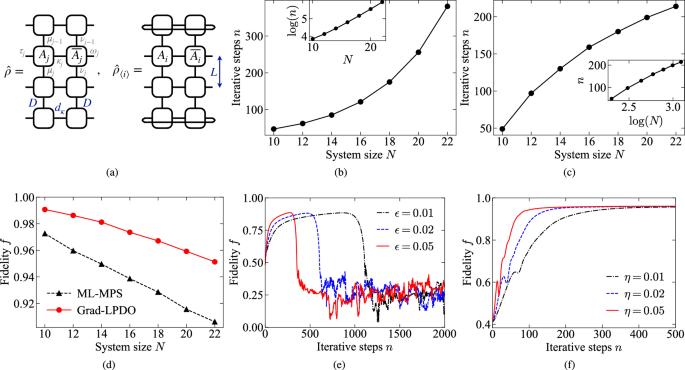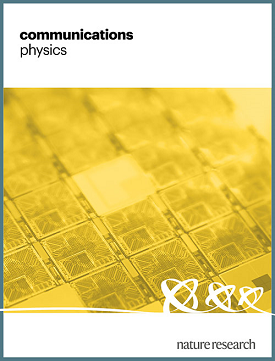Quantum state tomography with locally purified density operators and local measurements
IF 5.4
1区 物理与天体物理
Q1 PHYSICS, MULTIDISCIPLINARY
引用次数: 0
Abstract
Understanding quantum systems is of significant importance for assessing the performance of quantum hardware and software, as well as exploring quantum control and quantum sensing. An efficient representation of quantum states enables realizing quantum state tomography with minimal measurements. In this study, we propose an alternative approach to state tomography that uses tensor network representations of mixed states through locally purified density operators and employs a classical data postprocessing algorithm requiring only local measurements. Through numerical simulations of one-dimensional pure and mixed states and two-dimensional pure states up to size 8 × 8, we demonstrate the efficiency, accuracy, and robustness of our proposed methods. Experiments on the IBM and Quafu Quantum platforms complement these numerical simulations. Our study opens avenues in quantum state tomography for two-dimensional systems using tensor network formalism. Quantum state tomography is a fundamental tool for assessing the performance of quantum hardware and plays a crucial role in advancing quantum information processing. The authors present a method based on tensor network representations and local measurements, demonstrating accuracy and efficiency in characterizing noisy quantum states.

利用局部纯化密度算子和局部测量的量子态层析技术
了解量子系统对于评估量子硬件和软件的性能以及探索量子控制和量子传感具有重要意义。量子态的高效表示能够以最少的测量实现量子态层析。在本研究中,我们提出了另一种状态层析方法,即通过局部纯化的密度算子使用张量网络表示混合状态,并采用只需局部测量的经典数据后处理算法。通过对一维纯态和混合态以及最大尺寸为 8 × 8 的二维纯态进行数值模拟,我们证明了所提方法的效率、准确性和鲁棒性。在 IBM 和 Quafu Quantum 平台上进行的实验是对这些数值模拟的补充。我们的研究开辟了利用张量网络形式主义进行二维系统量子态层析的途径。量子态层析是评估量子硬件性能的基本工具,在推动量子信息处理方面发挥着至关重要的作用。作者提出了一种基于张量网络表征和局部测量的方法,展示了表征噪声量子态的准确性和效率。
本文章由计算机程序翻译,如有差异,请以英文原文为准。
求助全文
约1分钟内获得全文
求助全文
来源期刊

Communications Physics
Physics and Astronomy-General Physics and Astronomy
CiteScore
8.40
自引率
3.60%
发文量
276
审稿时长
13 weeks
期刊介绍:
Communications Physics is an open access journal from Nature Research publishing high-quality research, reviews and commentary in all areas of the physical sciences. Research papers published by the journal represent significant advances bringing new insight to a specialized area of research in physics. We also aim to provide a community forum for issues of importance to all physicists, regardless of sub-discipline.
The scope of the journal covers all areas of experimental, applied, fundamental, and interdisciplinary physical sciences. Primary research published in Communications Physics includes novel experimental results, new techniques or computational methods that may influence the work of others in the sub-discipline. We also consider submissions from adjacent research fields where the central advance of the study is of interest to physicists, for example material sciences, physical chemistry and technologies.
 求助内容:
求助内容: 应助结果提醒方式:
应助结果提醒方式:


